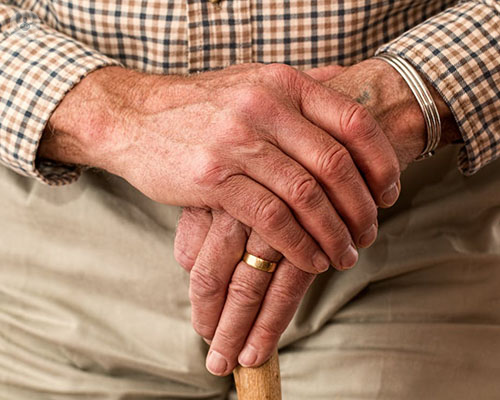
Osteoporosis and its relationship with cancer: what can be done to improve bone density?
Osteoporosis (OP) is a major health problem worldwide. It is estimated that there are more than 200 million people in the world who have OP and are therefore at increased risk of fractures, the most clinically significant consequence of the disease. Although it is not the only disease of bone metabolism, it is the most common. In osteoporosis, the bone is properly calcified, but there is less bone per unit volume. In addition, there is an alteration of the bone microarchitecture. The bone is both worse in quantity and quality. This leads to a decrease in bone resistance, which can lead to fractures.
Osteoporosis and cancer
Patients who have had cancer generally have more risk factors for osteoporosis. Sometimes cancer patients experience prolonged periods of immobility and being sedentary. This can affect bone development as can treatments such as chemotherapy and radiotherapy.
There are some cancers that feed on certain hormones, they are ‘hormone-dependent, it is therefore necessary to use hormonal therapies. However, the downside is that this negatively affects the correct calcification of the bone. This is the case with hormone therapy for breast or prostate cancer. These treatments reduce oestrogen levels or the male hormone testosterone (hormones that help maintain bone density), contributing to the loss of bone mass.
Bone formation and resorption
Bone is living tissue and it is in constant renewal, in constant movement: new bone is formed (bone formation), and, simultaneously, aged bone is destroyed (bone resorption). Osteoporosis appears when there is an imbalance and bone density is being lost. Both chemotherapy and radiotherapy act directly and indirectly on this balance, breaking it down and favouring the onset of osteoporosis.
Osteoporosis diagnosis
After having performed an anamnesis, an "interrogation" aimed at identifying possible risk factors, the patient is examined to obtain an overall assessment with tests being:
- An analysis of blood and urine, which the patient has to collect for 24 hours, to see the circulating levels of calcium and phosphorus in the blood and urine, as well as determination of other elements that are important for a good formation of bone mass, such as vitamin D, among others.
- An x-ray of the spine to see the vertebrae to check there is not a disc that has decreased in height.
- A bone densitometry: There are several radiological techniques that allow us to make measurements of bone mineral density (BMD) of patients. The one that we use habitually is the Bone Densitometry (DEXA). Bone densitometry is a special x-ray test used to measure the calcium content of bone, usually in the lower back and hips. It is useful to see the BMD at a given time and to assess the evolution of the disease and the response to treatment.
Treatment
With the results from all of the above, we are able to make an assessment of the patient’s bone situation, estimating the risk of them suffering a fracture. All patients with fracture risk irrespective of the value of densitometry should be treated. The best treatment is a combination of general non-pharmacological measures and, in those cases when it is required, treatment with drugs. It is fundamental to make lifestyle changes too, increasing physical activity outdoors, maintaining a good dietary intake of dairy products and abstaining from toxic substances such as tobacco and alcohol, are all positive steps. It is also beneficial to take calcium and vitamin D supplements and there are drugs which help strengthen the bones by improving calcium retention.

